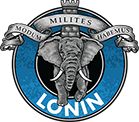Tenshin Bukō-ryū Heihō
Please contact coach if interested
Coach
Class Overview
Tenshin Bukō-ryū Heihō is a traditional Japanese martial art specialized in the use of the naginata (glaive), and the kagitsuki naginata (naginata with a small cross piece). The naginata practices against a variety of other weapons, including yari (spear), tachi (sword) and kusarigama (sickle/war pick with a weighted chain).
The kagitsuki nagainata is trained against tachi and yari.
There are secondary teachings pairing the tachi against bo, kusarigama, and nagamaki. The bo represents a naginata with a broken blade, and the nakamaki is similar to a naginata, but with a heavier, longer blade
Curriculum
Training in Tenshin Bukō-ryū Heihō begins with kihon, or foundational cutting and footwork practices to develop facility with the naginata and associated weapons, as well as entrain proper body mechanics.
Following kihon, the primary method of practice uses two-person kata, typically with a senior in the teaching/receiving role, and junior in the doing role (uke and shitachi, respectively). Additional solo and two person drills will occasionally be based on sections of kata that may need additional attention.
Kata are organized into a Hon-mokuroku (primary teaching) and Betsu-mokuroku (additional teaching).
The Hon-mokuroku includes 6 sets of kata in 3 groups of proficiency:
Shoden: ai-naginata – eleven kata, naginata-tachi – five kata
Chuden: naginata-yari – five kata, naginata-kusarigama – five kata
Okuden: kagitsuki naginata-tachi – five kata, kagitsuki naginata-yari – five kata
The Betsu-mokuroku includes 3 sets of kata
Bōjutsu-tachi – five kata
Kusarigama-tachi – five kata
Nagamaki-tachi – five kata
History
Please see Ellis Amdur’s Tenshin Bukō-ryū Heihō website for a more thorough history of the ryu (https://tenshinbukoryu.org/). Briefly, Tenshin Bukō-ryū Heihō, emerged in the mid-1800s as a renaissance in the nagainata practice of the Suneya family, a clan in the Chichibu region of Japan. The Suneya family had adopted Toda-ryū, an offshoot of Chūjō-ryū, and apparently applied it to or combined it with the family art of Suneya-kei naginatajutsu.
Suneya Ryōsuke and his wife Suneya Sato-o initiated the renaissance in the family art, giving it the name Toda-ha Bukō-ryū. This name was used from the mid-1800s through 2022, when Kent Sorensen, current head of the ryu, changed the name to Tenshin Bukō-ryū to denote a renewal of the school.
Recommended Reading
Amdur, Ellis. Old School: Essays on Japanese Martial Traditions–Expanded Edition. Vol. 2. Freelance Academy Press, 2015.
Amdur, Ellis. Hidden In Plain Sight: Esoteric Power Training within Japanese Martial Traditions. Vol. 2. Freelance Academy Press, 2018.
Draeger, D. The Martial Arts and ways of Japan, Vol. 1: Classical Bujutsu Vol. 2: Classical Budo Vol. 3: Modern Bujutsu & Budo, 1973.
Friday, Karl F., and Fumitake Seki.Legacies of the Sword: The Kashima-Shinryu and Samurai Martial Culture. University of Hawaii Press, 1997.
Online Resources
More information can be found on the following websties:
https://bukoryu.main.jp/en/index.html, the website for the home dojo in Funabashi, Japan
https://tenshinbukoryu.org/, the website for Ellis Amdur’s Hokusei Dōjō of Tenshin Bukō-ryū
Gear Equipment
Prospective students do not need to purchase a naginata to start. Any 5 or 6 foot staff will work for home practice, and naginata will be available in class for practice. Long term students will eventually need to purchase their own naginata (Purple Heart carries them, among other vendors), bokken, and other practice weapons. The standard practice unform is a white or indigo gi (top) and black or indigo hakama, or comfortable clothing that allows lots of arm movement and footwork.


